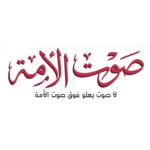|
Getting your Trinity Audio player ready...
|
Syria: The Wall of Fear is Cracking
The Tsunami wave is reaching the Syrian shore. Riots are erupting in some Syrian cities. Demonstrations are erupting in Damascus, Hums or Haleb, and Hama – all traditionally known as strongholds of Syrian opposition, mostly politically Islamist groups. However, these demonstrations could be described as relatively low intensity demonstrations.
One place is exceptional – the city of Dara’a next to the Syrian – Jordanian border. Violent clashes are taking place in Dara’a over the past few days. Five people were killed, hundreds injured, and dozens were arrested by the Syrian security forces…Yet- the riots and protests are not dying, in fact they are gaining momentum. Government symbols in Dara’a were destroyed, the local Governor’s building was burned to the ground and the statue of Assad -the father, was knocked down. Recent reports that are not confirmed suggest that some of the Assad family members are leaving Syria.
As for now, Dara’a is clearly taking the lead.
The leading role of Dara’a in the riots is interesting and meaningful for couple of reasons. Dara’a is located in a geographic area known as Huran, traditionally the home of big strong families whose roots go back to a social and political structure of Bedouin tribes that settled in this area over the course of history. In fact, these Bedouin tribes settled, and live, on both sides of the Syrian-Jordanian border.
As riots intensified in Dara’a over the last couple of days, the regular slogans were chanted (freedom, down with Assad, democracy, rights, etc.).
However, an additional unique slogan was chanted as well among the people of the Huran. They are saying “Ifzau Dara’a.” This slogan is related to a term deeply rooted in Bedouin tradition – Alrijal Lilnaza’a Walniswan Lilfaza’a. This phrase means – it is an emergency situation and the “women should sound the alarm” (Alniswan Lilfatza’a) and the “men should take up arms” (Alrijal Lilnaza’a). Indeed, according to unconfirmed sources, the leaders of the big families in Dara’a ordered their people to arm their selves.
Another slogan is chanted and it may signify the direction of the uprising. The slogan is “Allah, Suriya, Hurryia Wabas” meaning “Allah, Syria, Freedom and That’s It.””
No doubt. The horrifying Syrian wall of fear is cracking. The relationship between the Syrian regime and the Syrian people was always an equation that has two core components – fear and hatred. For a long time fear overwhelmed the hatred. As long as that was the situation the regime was secured. It seems like that barrier was breached now. The hatred for the regime is overwhelming the fear. The Assad regime is no longer secure.
As is typical these days, the internet and Facebook are playing a major role in the Syrian scene. The web is flooded with dozens and dozens of Syrian bloggers calling for uprising, defying the Assad regime, calling for democracy, freedom and justice. Attached is a link to one of hundreds of video pieces that were downloaded in the last days. The graffiti on the wall sends the same messages “Irhal Ya Assad” “Assad Go Away,” “Free Syria,” “Assad – your time has come” etc.
Who are the protesters? As could be expected, the young generation is the major spine of the riots. Frustrated, angry and eager for a change, the young Syrians are smashing the wall of fear.
Yet it is not only the young generation. According to the reports, another pillar of the uprising is Syrian refugees – previously Syrian farmers – mostly from the east and northeast parts of Syria that became refugees as an outcome of a massive drought. That could explain the leading role of Dara’a in the current uprising. Dara’a is one the areas that suffered that drought.
I was referring to the crisis of the Syrian refugees in my previous article entitled “Syria: A Glimpse behind the Curtain of Fear” (https://avimelamed.wpengine.com/?p=384)
I said then that the Syrian regime is sitting on a time bomb. Well, it seems that time bomb was ticking even faster than I thought.
Meanwhile, eyes are also turned to other important group in Syria – The Kurds. These very days the Kurds are celebrating their most important holiday, The Nuroz – their New Years holiday. But the Kurds are not only celebrating. They are also commemorating. These very days, exactly 7 years ago, the Assad regime brutally smashed a Kurdish uprising in the city of Qumashly in northeastern Syria. There are about 3 million Kurds in Syria, they are about 15% of the population of the country. The Kurds in Syria have traditionally been badly treated and discriminated against. They have been deprived of basic civil rights, any recognition as an ethnic group, neglected and abandoned. And if that is not enough, the Kurds are one of the greatest sufferers from the catastrophic drought. The Kurds really don’t like the Assad regime. All eyes in Syria are turned towards the Kurds. In fact, the Syrian protesters are urging the Kurds to join the fight. Indeed, reports indicate that some limited scale demonstrations have already sparked in some Kurdish cities like Qumashly and Dir A-Zur. If the Kurds join in the demonstrations the Assad regime will face a challenge that may be too much for it to handle.
There is no doubt. The barrier of fear in Syria had been breached. Once it has happened, one should expect a scenario of a quickly deteriorating situation in Syria.
Syria is neither Egypt nor Tunisia, both in terms of its social political and cultural structure, as well as its regime. In fact, the Syrian regime resembles more Kadafi’s regime in Libya in the sense that the Assad regime will not step down quietly. That regime will not hesitate to oppress the uprising by all means possible. In fact, the regime is already doing that. Helicopters are shooting at crowds and the Syrian security forces are using live ammunition to disperse the demonstrations. The number of casualties is rising. And most of them are currently from Dara’a. The people that were killed are mostly young men from the big families of Abazid and Z’uebi. That piece of information is significant. The Bedouin life and death codes are very strict. They will claim their revenge.
At this point there is one major question that has to be asked: What will the position of the international community be in a situation where events in Syria quickly deteriorate into a bloody massacre in Syrian cities? Will the UN Security Council issue a resolution aiming to protect, by all means possible, the Syrian civilians from their own brutal regime? What will be the position of the Arab League?
And of course, there is the Israeli perspective. Obviously, the events in the Middle East impact Israel one way or another. Some may impact in the short term and some in the long run. Some may have a severe impact. But, in this case, one thing is certain. The outcome of the events in Syria will have an enormous impact on Israel in the short term as well as the long term. The turbulence in Syria will directly impact the whole structure of Iran- Syria- Hezbollah and Hamas – the radical Axis that challenges Israel.
These questions are not theoretical. They are very immediate and very clear, and they may be very relevant in a very short period of time. The way they will be addressed by the International community and the factors in the region, will substantially impact both the regional and global system.
If you want to have a better understanding of the news and what really drives the unfolding events…
Read the latest book of Avi Melamed,
INSIDE THE MIDDLE EAST | ENTERING A NEW ERA, available now >>>
Follow me on Twitter @AviMelamed; Facebook @InsideTheMiddleEast; for more Videos on YouTube https://www.youtube.com/c/AviMelamed
I can always be reached at Av*@********ed.com
































































